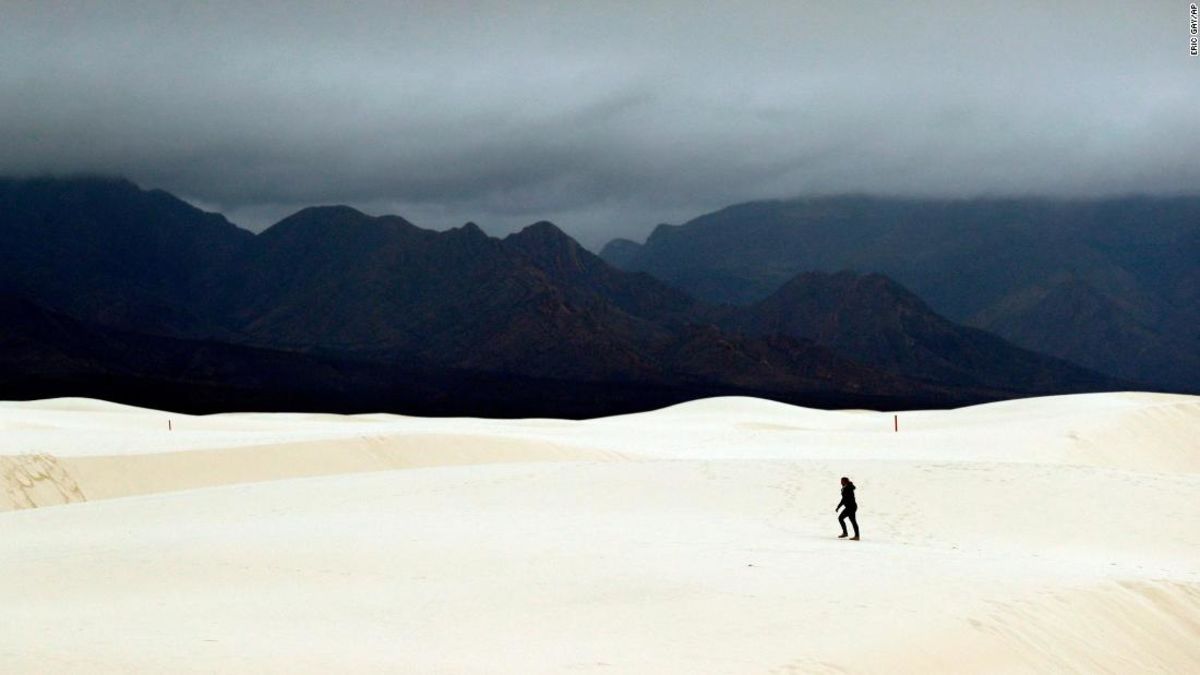The White Sands National Monument in southern New Mexico has been officially designated as White Sands National Park.

White Sands is the world largest gypsum dune field.
Universal Images Group via Getty Images
Gypsum is a common mineral in rocks around the world and is extremely soft. It can break down easily, and the grains reflect light rather than allowing it to pass through, which gives off its snowy appearance, according to the park service.
What allows gypsum sand to form is water. The park service says that White Sands is a “wet environment” at 100% humidity.
The dunes at White Sands likely began to form 7,000 to 10,000 years ago as Lake Otero began to dry up, according to the park service.
While there is consistent wind, with some dunes traveling as far as 12 to 13 feet per year, there is a shallow water table beneath the dunes that the park service says, “acts like a glue,” holding the dunes in place.
But those attempts pushed local residents to lobby for protection of the dune fields. White Sands was named a national monument in 1933 during the final days of President Herbert Hoover’s administration.
